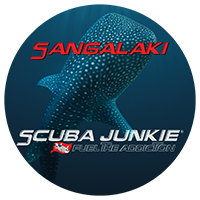“Can I visit Kakaban stingless jellyfish lake during my visit?” has to be one of our most frequently asked questions… And with good reason! There are very few of these lakes in the world and it’s a trip not to be missed. It’s a surreal experience and the photos will leave your Instagram followers wishing they were there with you! Swimming and snorkelling in the mangrove lined lake, surrounded by jungle sounds and thousands of stingless jellyfish makes you feel like you’re in a sci-fi movie… And no, they really can’t sting you!
The jellyfish lake is on Kakaban Island, which is about an hour speedboat ride away from our base on Derawan. The huge 5 hectare lake pretty much takes up the whole of the interior part of the island, and at its deepest point it’s 17m deep! Once you reach the islands jetty and gorgeous white sand beach there’s a short walk up some steps and over a bridge through the forest before you reach the lake – It takes about five minutes. Once you reach the edge of the forest you can walk down the steps to the jetty – It has steps and a low platform so that you can get in and out easily and without jumping. We usually get to spend about 45 minutes at the lake during one of our surface intervals, plenty of time for a good snorkel and some photos.
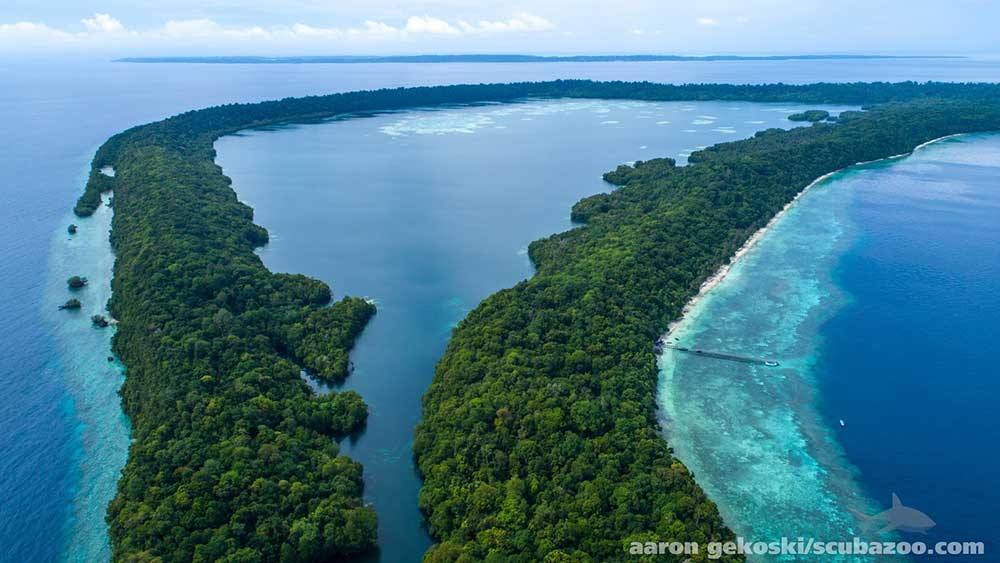
The age of the lake is estimated to be about 11,000+ years old. It is thought that the lakes formation occurred during a time period called the Holocene (a “geological epoch”), where sea levels rose as much as 35m. When the sea levels rose the sea water filled the inside of the island, when the sea levels reduced again the sea water was trapped inside the island, forming the lake. With rainfall over the years it has mixed together and become brackish water.
The jellyfish inside it (once ocean dwellers) have survived and evolved – they no longer need to sting as there are no predators for them, and so the stingless jellyfish lake came into being!
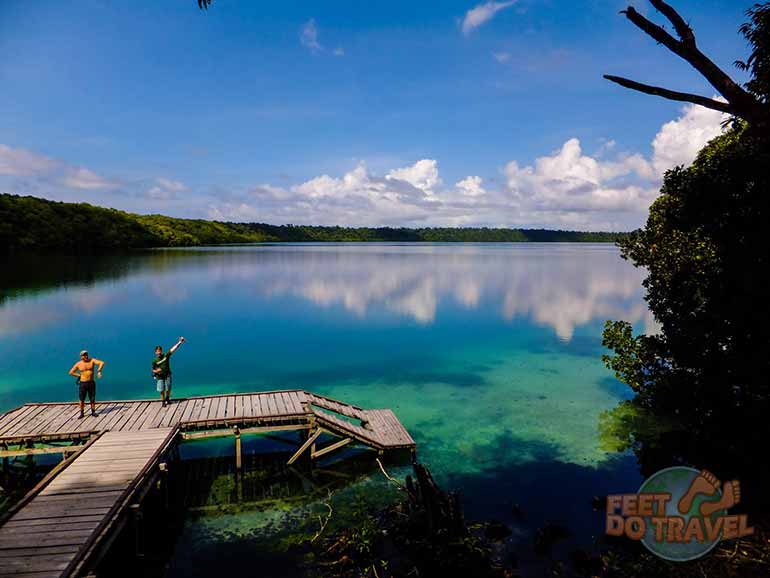
There are actually four species of stingless jellies in Kakaban’s lake:
The largest of the lake’s jellyfish, up to 30cm across. They are transparent and plate-sized. As they’re transparent they’re a little hard to see, but once your eyes adjust you can spot them easily!
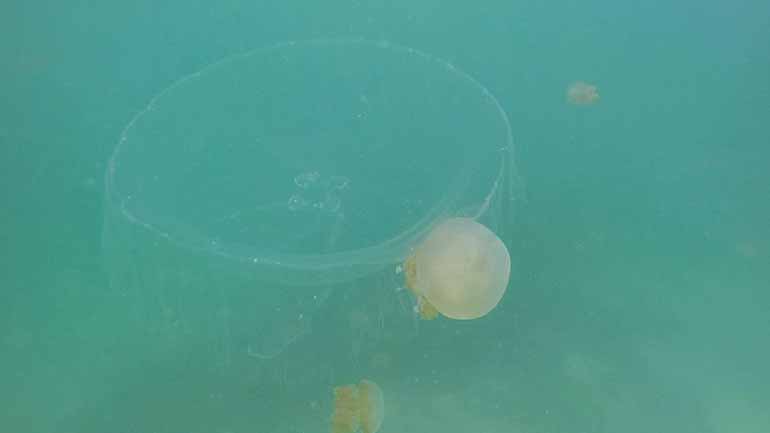
This is the smallest of the jellyfish species in the lake. Their bodies are smaller than 1cm and their tentacles perhaps 3-4cms long. There aren’t so many of them (compared to the other species), so with their transparent colour and tiny size it makes them the most tricky to spot! (Don’t worry about the name these ones don’t sting!)
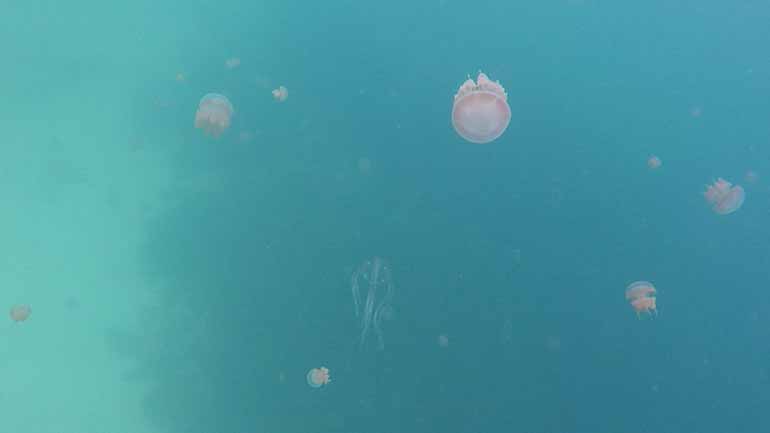
These are the ones you have probably seen in the photos – there are thousands upon thousands of them and you don’t have to swim the entire lake to find them! As soon as you get in the water, they’re right there! These grow up to 20cm across, but there are plenty of small ones in there too.
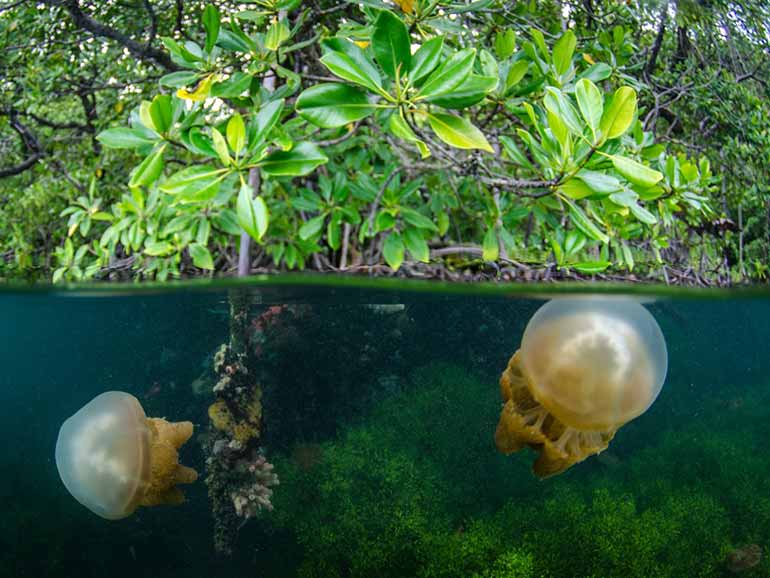
These look quite similar to the spotted jellyfish, but you’ll find them (you guessed it!) upside down on the sandy bottom of the lake. They are of a similar size to the spotted jellyfish – up to 20cm.
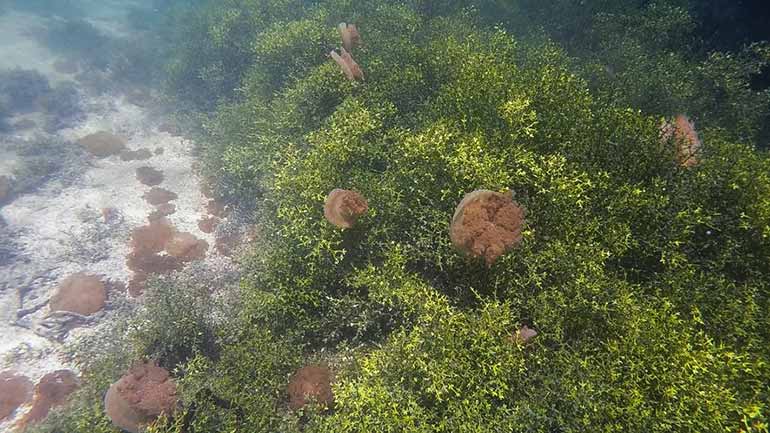
It’s not just home to thousands of jellyfish! You’ll find sponges, sea cucumbers, gobies and sea grasses in there, plus the beautiful mangrove trees line the edge of the lake. And when you pop up to have a look round you can hear the amazing jungle sounds of the uninhabited island.
We know we’re not technically in the sea here, but as just as we do in the ocean we adhere to the correct environmentally aware protocol in the lake as well. This involves:
Also – in terms of dive safety we don’t duck dive / skin dive as we usually visit on our surface interval!
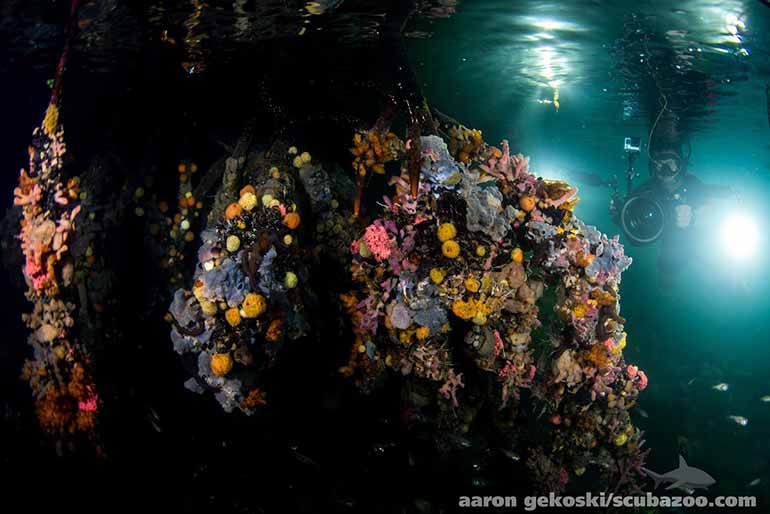
You definitely want your mask and snorkel, plus something to cover up with like your rash guard or wetsuit! As the walk to the lakes jetty is over wooden steps you might want to bring your flip flops or wear your dive booties. You’ll need some Rupiah cash as you make a small donation upon entry (Rp 20,000 per person). And of course: your camera! Otherwise how will you make your friends jealous of this amazing experience?!
Trips to Kakaban (and therefore the amazing jellyfish lake) are available with our dive & accommodation packages which include 4 diving days or more.
